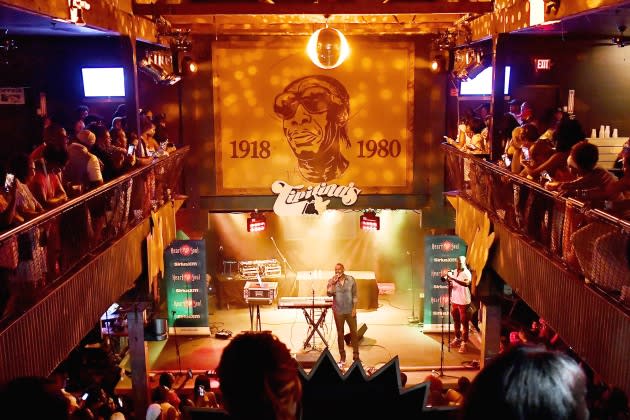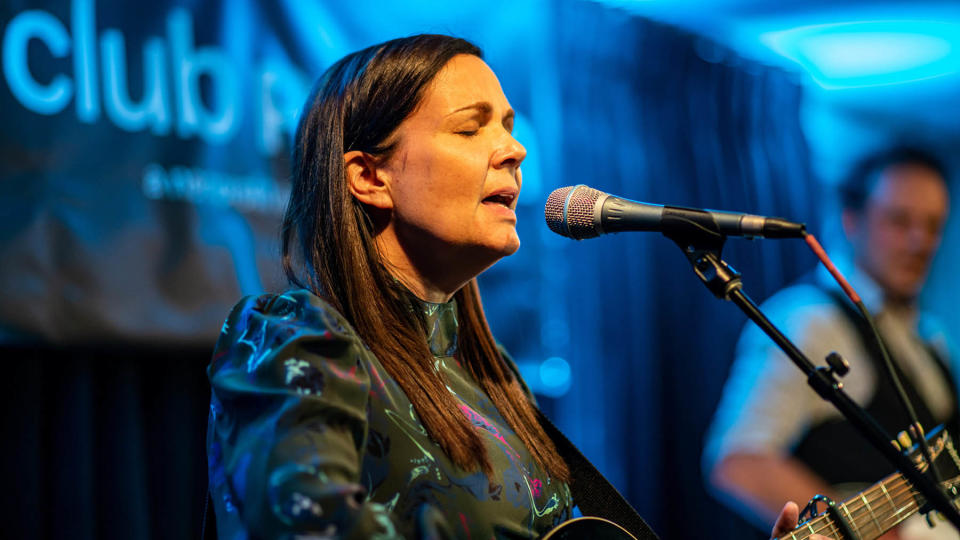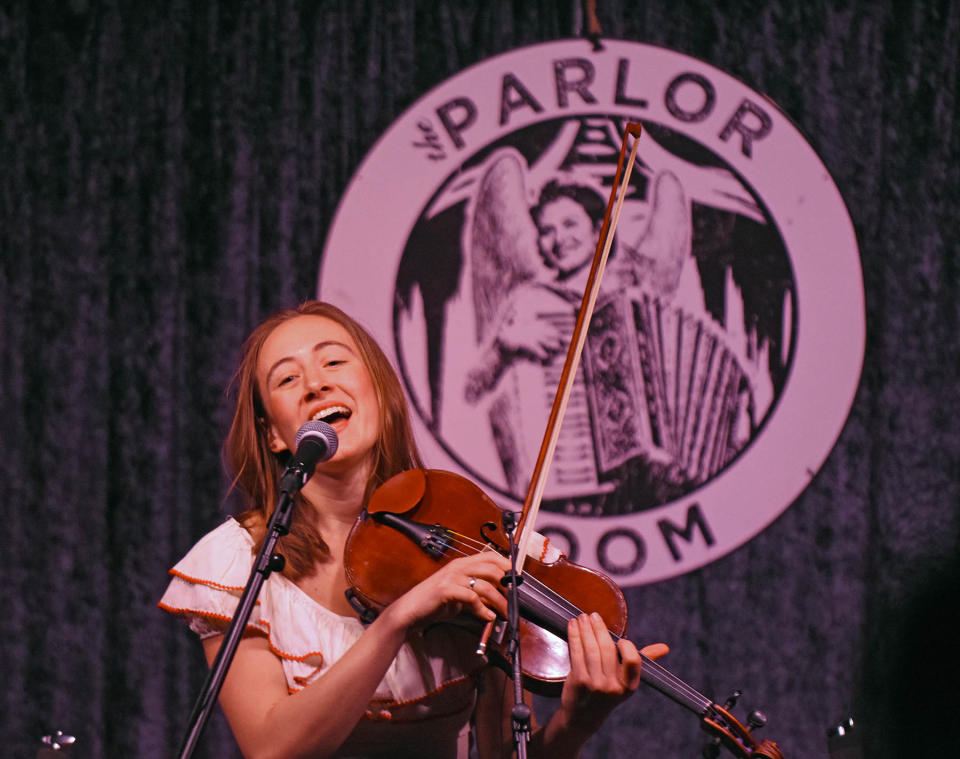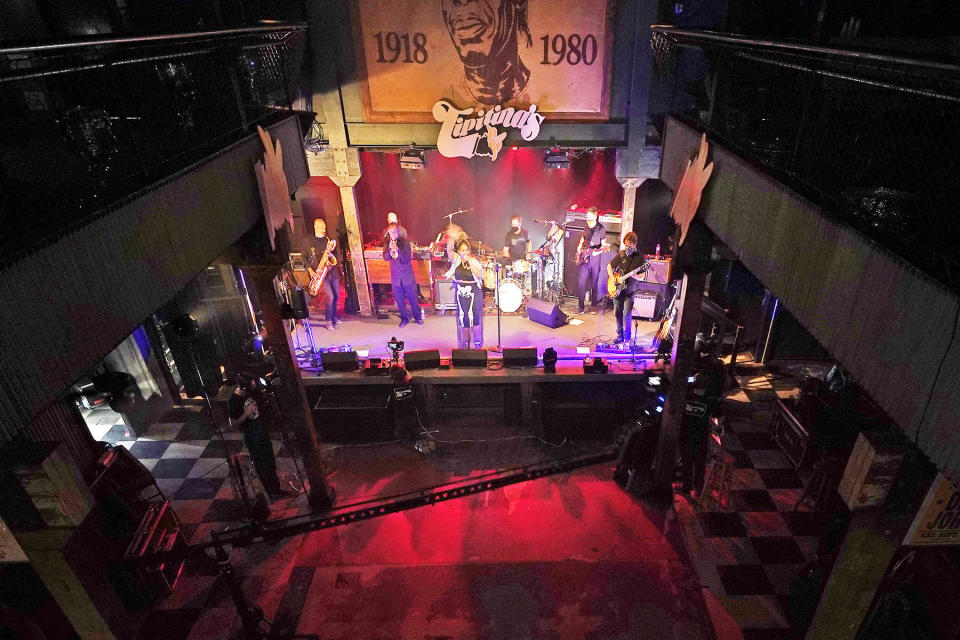Independent Venues Have Found New Ways to Survive — They Hope

Things were supposed to be looking up. It was the fall of 2021, and live music was finally coming back after 18 months of a pandemic death spiral. Indie venues had banded together to secure a historic federal funding package. Musicians were racing to schedule shows and fans were once again buying tickets.
Then came omicron. “People were absolutely afraid,” remembers Hal Real, the founder and CEO of World Cafe Live in Philadelphia. “Even if you had a vax requirement and a mask mandate, people were not ready to come out and be in small spaces again, breathing the same air.”
More from Rolling Stone
Shows and tours got canceled all over again. When some went ahead, the fans stopped showing up — even those who had bought tickets. With no-shows running as high as 40 percent, a number that would typically be in the single digits, venues lost the all-important food, beverage, and merch sales they rely upon to turn a profit.
“That was devastating,” says Audrey Fix Schaefer, communications director for I.M.P., which owns the 9:30 Club and several other venues in the Washington, D.C., area. “For some, it was harder to be open than it was to be shut. Because then you’re overstaffed, because you’re thinking you have a sold-out show — but you don’t.”
Live Nation went on to report record revenue for the following year — $16.7 billion in 2022, up 44 percent even from its pre-pandemic high. Indie venues weren’t so lucky. “What we had all hoped before the pandemic would be a six-month recovery, it became quite clear during those [next] six months that it would be a multiyear recovery,” says Real.
But there were beacons of light in the darkness. In Boston, Club Passim was thriving, so much so that it raised funds to help aid struggling artists in need of financial support. The venue, which has operated as a non-profit space since the mid-Nineties, pivoted quickly to livestream shows in 2020, and actually grew its following in the process. Its longstanding membership system was flooded with new fans making donations.
“We were able to reach a much higher demographic of people who don’t just live locally,” says Summer McCall, marketing and membership manager. The virtual concerts were so popular that Club Passim continues to make livestreams available for almost every in-person gig to this day. “It’s now one of our biggest services that we offer,” she adds.
Being a nonprofit made it easier for those followers to contribute. In return for becoming members, they received perks like early-access ticket sales and reduced or free entry to certain events and series. Club Passim was also eligible for various state and federal grant money, which McCall describes as “essential.”
“We had a lot of venues contacting us for advice or insight on how our process was going and if they could adopt a similar model,” she says.

In this brave new world for live music, anything and everything seems to be on the table. Even collaboration. Before the pandemic, the idea of indie venues reaching out to one another for much of anything was almost unheard of. “I never went to conferences. I didn’t do panels. I didn’t have any concern about what somebody was doing in Nashville,” says Tom DeGeorge, co-owner and general manager of the Tampa Bay, Florida, club Crowbar. “My only concern was, how do I compete with the people that I have here locally?”
Covid-19, and in particular the unprecedented push to secure federal relief, changed that. The National Independent Venue Association, formed in the spring of 2020, spearheaded the campaign for the Save Our Stages Act that eventually bore fruit with the $16 billion Shuttered Venue Operators Grant. According to Schaefer, surveys conducted by NIVA revealed that 90 percent of independent venues and music festivals expected to go out of business without that funding.
Schaefer, who, like Real, is on the NIVA board of directors, was amazed by the groundswell of support from fans as they lobbied for Congress’ intervention. “They said, ‘If you can get 50,000 emails sent [to representatives], that would be a success,” she recalls. “By the time we were done, two million emails had been sent. It was really something else.”
Having seen the power in numbers that NIVA had cultivated, other grassroots efforts took shape, including D Tour, a collection of indie bookers that launched early last year. Initially focused in tertiary markets, the group’s aim was to help increase the individual members’ bargaining power as a collective.
“Prior to Covid, many of us were just fighting for scraps,” says Jessie Hartke, co-owner of Hartke Presents in Wichita, Kansas, and CCO of D Tour. Without some sense of unity, that was the best indies could hope for against the huge market share of corporations like Live Nation and AEG. “We are not each other’s enemies. Instead, we are out there trying to elevate the entire concept of independent venues and independent music.”
Together, the D Tour members help route shows to one another’s businesses — a strategy that can be helpful to artists as well as the venues. “It tends to be overlooked, the importance of those tertiary dates that you have to string together between those anchor dates to make a tour work,” Hartke says. “So much attention gets put on those major markets. [But] if you’re getting from Denver to Minneapolis, you’re gonna need a few stops along the way.”

Such efforts have become all the more vital as corporate entities buy up or invest in struggling smaller rooms. Crowbar was one of five indie venues in the historic Ybor City neighborhood of Tampa prior to the pandemic. It’s now the only one whose primary function is touring and local concerts. DeGeorge blames the combination of corporate takeovers and gentrification, as several of his former neighbors have been driven out by skyrocketing rental prices. His lease runs out at the end of 2026, and he’s already resigned himself to being forced to close when that happens. “I know my days are numbered,” he admits.
Thus, a new pattern has emerged for indie owners: focusing on developing themselves as community spaces. Seeking nonprofit status is one promising way of doing so. A hundred miles from Boston in Northampton, Massachusetts, the 100-cap Parlor Room converted to a nonprofit this past January. “Becoming a nonprofit has allowed us to pursue a lot of other opportunities, a lot of other income sources. And it’s really stabilized the business,” says co-founder and former co-owner Jim Olsen, who now serves on the nonprofit advisory board since the transition.
Like Club Passim, the Parlor Room started a membership program and also opened a school of music, which has attracted more members of the local college community and led to more diversified programing. “[The members] can write off the taxes because they’re supporting a nonprofit. So that’s a big source of money, in addition to the ticket revenue,” Olsen says. He estimates 40 to 50 percent of the club’s revenue comes from non-profit sources.
Another big help: Massachusetts’ generous opportunities for state grants. Olsen cites at least two other venues nearby — The Drake in Amherst and BOMBYX Center for Arts & Equity in Florence — that opened in the last two years as nonprofits.
World Cafe Live in Philly made the nonprofit switch just prior to the pandemic. “It’s not for everybody, because not everybody either has the financial or staffing capacity to do this kind of programming,” says Real, whose venue also has a partnership with public radio station WXPN, the home of World Cafe. He likens it to running a small performing arts center. “There’s lots of rules. You have to go through audits, which most independent vendors don’t. You have to have a board and a true charitable mission.”
Going nonprofit isn’t the only avenue for community outreach. WCL leaned into its capacities as an educational space when the last economic crisis hit in 2008. At that time, Philadelphia’s public schools slashed their music programming, so WCL stepped into the void to try to extend opportunities for local children. It has since facilitated various in-school residencies and after-school programs and six albums of original student music, reputedly reaching 60,000 participants.
In New Orleans, the members of veteran jam band Galactic purchased the historic Tipitina’s in 2018. During the pandemic, city ordinances allowed them to host sidewalk performances, which they livestreamed, and sell curbside alcohol. They also formed a subscription-based record club curated by the band members that continues to be a success. Drummer Stanton Moore acknowledges that, being a local institution unto themselves, they were uniquely placed to run a music venue. But what had started as a passion project turned into a rescue mission when the band learned of the previous owner’s many legal entanglements and financial woes.
“I don’t want to say that we saved it,” says Moore. “We don’t consider ourselves the owners. We consider ourselves the current caretakers of our favorite venue, and everybody else we know’s favorite venue.”
The past eight months have at last seen some renewed stability in show attendance, with owners reporting a return to something approaching normal levels. Whatever the new “normal” is, the risk hasn’t exactly diminished. As the no-show trend improved, Real says ticket presales cratered — only to see an increase in walkups. But relying on walkups is a gamble even in a business that runs on tight margins.

“It’s a completely different world in 2023,” says DeGeorge. “You have to be 100 times smarter, move 100 times faster, and be much more focused on all kinds of things in order to survive in this climate right now.”
Challenges remain in figuring out how to get fans out to shows. For one, the demands of marketing continue to fluctuate: Where radio and social media were once fairly reliable outlets for selling tickets, Hartke says they now seem to be wholly unpredictable. “The algorithms change on a seemingly daily basis. You can’t use the same concept for marketing [anymore],” she observes. “I can’t really say that we’ve found a new magic bullet.”
Part of it may simply be a cultural change. Blame it on work from home, perhaps. “If [fans] are at home now, and they’re in their slippers and stretch pants, getting the momentum and the energy to get out of the house — that’s more of a lift,” says Schaefer. “Some people just got accustomed to the couch.”
Then there’s the matter of safety. While the uneasiness toward indoor shows that came after the omicron surge has largely subsided, the spate of mass shootings has put a whole new onus on concert prep. It’s more and more common to see venues use metal detectors and increased security, previously the territory of arena shows and large-scale festivals. This creates a challenge in messaging and resources. “It’s not because our venues are unsafe,” DeGeorge insists, “it’s because we care about your safety.”
In the interest of being more engaged with their local communities, indie venues are not only pushing to be safe spaces but more diverse ones, both in terms of the bands they book and fans they attract as well as in the people they hire. “It’s not just programming, but how do we make sure it’s an inclusive, diverse, and equitable place that people feel comfortable coming to of all demographics,” says McCall.
To that end, Club Passim has organized an initiative called the Folk Collective, which gathers area thought leaders to help guide community conversations and event planning. D Tour emphasizes similar principles when evaluating new members. “[We want] people who are really trying to do things to elevate their overall community,” says Hartke. “They’re not just doing things to try to make money on that next show.”
While such measures should be seen as signs of progress, any once-held hope for a quick recovery is a distant memory. Surviving the past couple years has meant not just riding out a crisis, but several waves of them. Predicting the future is a luxury that indie venues mostly can’t afford right now.
“We have to stay on our surfboard,” says Real. “It’s really difficult to think long-term. We’re still just making our way through day-to-day here. But we look forward to being able to think long-term, that’s for sure.”
Best of Rolling Stone

